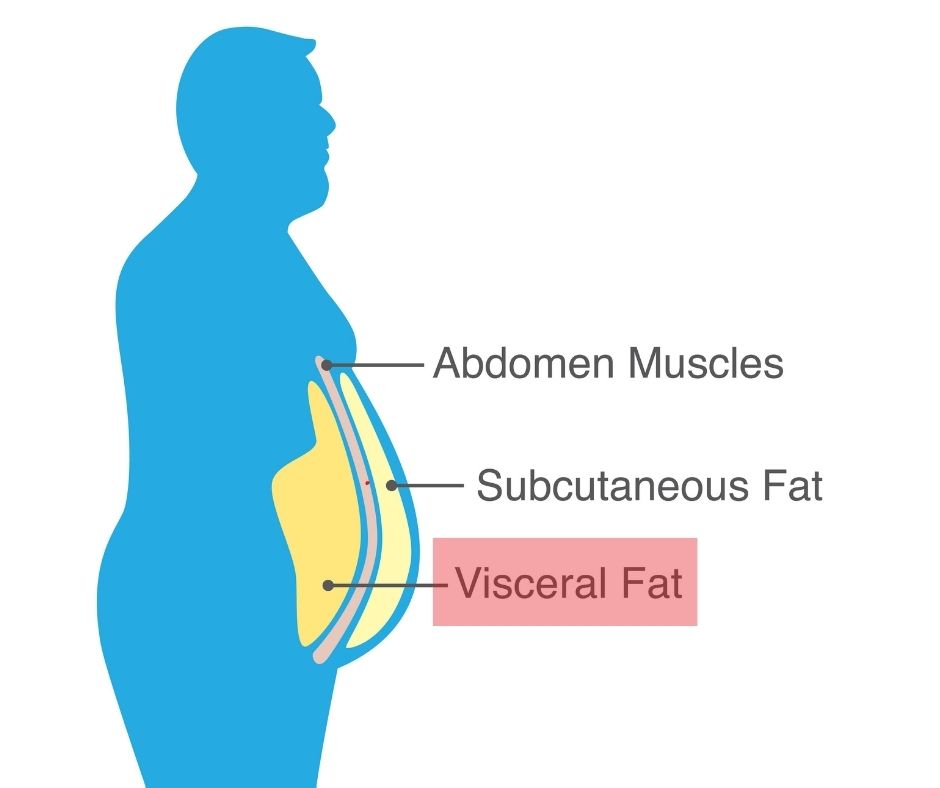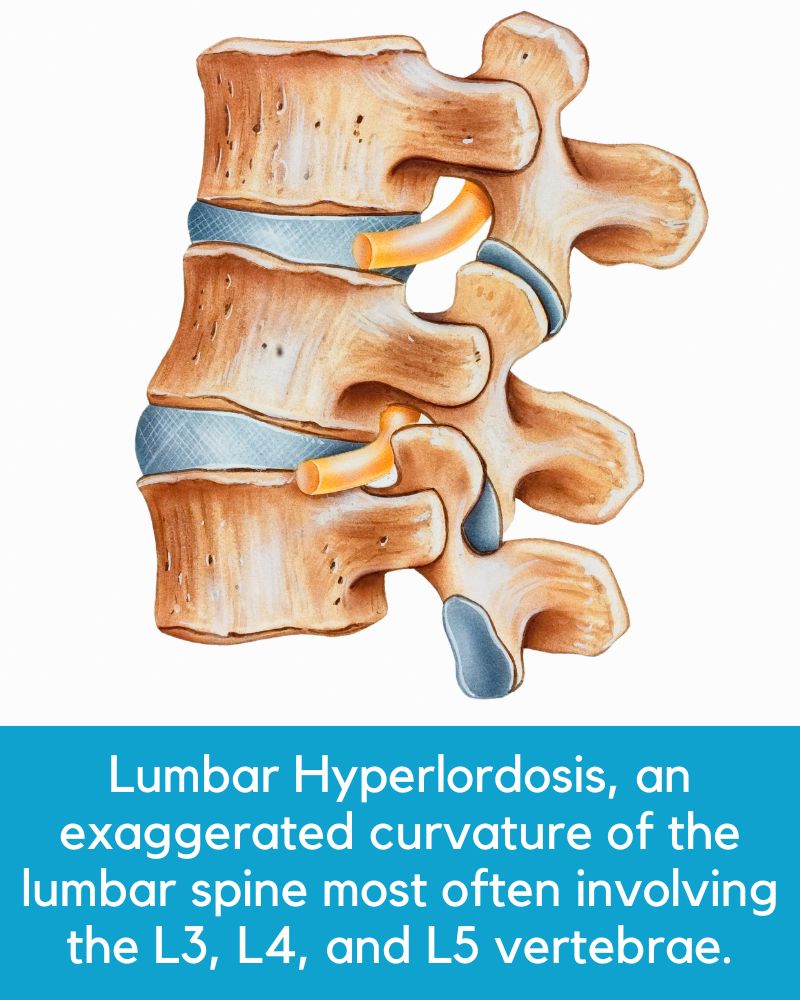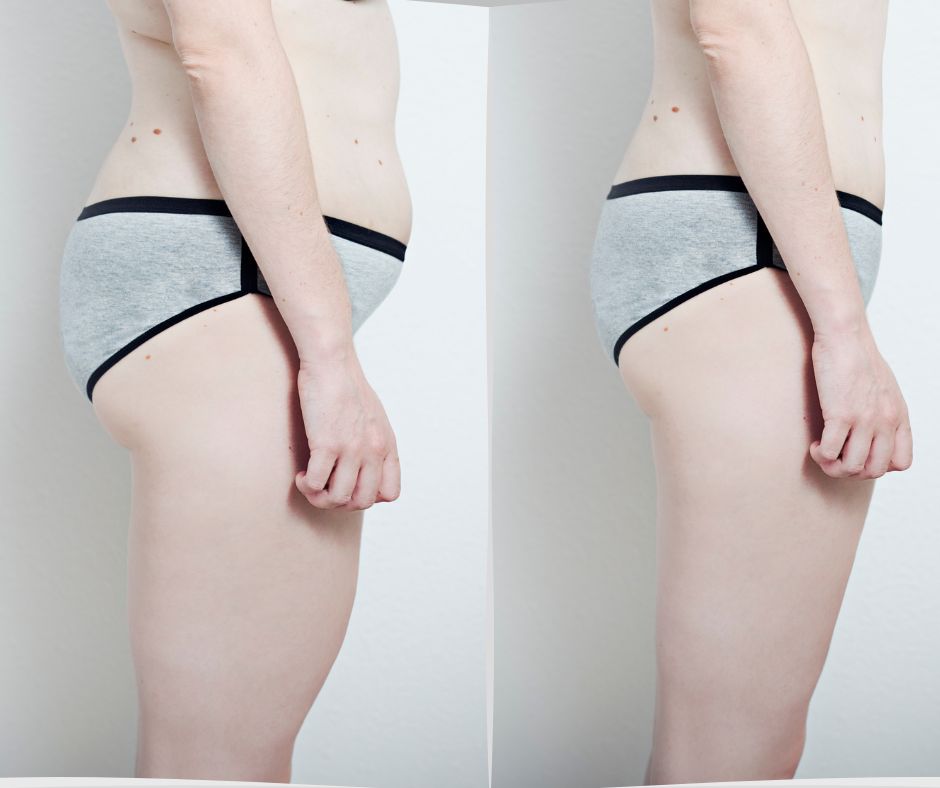
Adipose belly fat is not just a cosmetic concern. This type of fat, known as visceral fat, is a significant health risk, linked to conditions such as type 2 diabetes and heart disease.1 It’s also associated with an increased risk of back pain.
This article explores the correlation between adipose belly fat and back pain and offers four scientificallyproven natural remedies that provide dual benefits.
The Detrimental Impact of Adipose Belly Fat on Back Pain
Obesity’s rise has brought to light a health concern related to the accumulation of excess adipose fat, specifically in the belly area. This visceral fat, stored deep within the abdomen, has been connected to numerous health complications, including a higher risk of back pain.

Belly Fat, Biomechanics, and Back Pain
The spine is a complex structure tasked with body support, mobility, and flexibility. Designed to distribute weight evenly, when excess weight is gained around the belly, this equilibrium is disrupted, leading to potential issues.

The increased belly fat alters the body’s center of gravity, pushing the lumbar spine into unnatural curvature to compensate. This hyperlordosis, or excessive inward curve in the lower back, places strain on back muscles and ligaments, potentially leading to chronic pain and discomfort.2

Inflammatory Impact of Adipose Tissue
Adipose tissue, especially visceral fat, is metabolically active, contributing significantly to the body’s inflammatory processes. This tissue secretes adipokines— inflammatory mediators such as leptin, resistin, and various interleukins—leading to systemic inflammation.3
Chronic inflammation is linked to heightened pain sensitivity, meaning those with back pain may experience heightened discomfort and lowered pain thresholds. Furthermore, higher systemic inflammation levels can accelerate spinal structure degeneration, leading to herniated or slipped discs.
Natural Remedies Targeting Adipose Belly Fat and Back Pain
Four natural remedies have shown promise in managing both adipose belly fat and back pain:
1. Omega-3 Fatty Acids
Known for their anti-inflammatory properties, Omega-3 fatty acids help combat inflammation-induced back pain.4 They might also aid in body fat reduction. Research indicates that Omega-3 fatty acids can influence fat metabolism, decreasing fat accumulation, particularly in the abdominal area.5
2. Green Tea Extract
Green tea extract, and specifically its active component EGCG, aids in fat burning and boosts metabolic rate, helping manage belly fat.6 Green tea also carries anti-inflammatory polyphenols, reducing inflammation and potentially helping to alleviate back pain.7
3. Capsaicin
Capsaicin is known for its pain-relieving properties when applied topically.8 It can also enhance energy expenditure and fat oxidation, which is beneficial for managing adipose belly fat.9
4. Curcumin
Curcumin is recognized for its potent anti-inflammatory properties, potentially helping to alleviate back pain.10 It may also regulate body fat by modulating lipid metabolism and suppressing the inflammatory response in adipose tissue.11
Setting Weight Loss Goals for Chronic Back Pain Relief
Losing weight can significantly lessen the strain on your spine and alleviate back pain. However, it’s crucial to set realistic weight loss goals. The exact amount of weight loss needed depends on various factors, including your current weight, body composition, back pain severity, and overall health. Consulting with a healthcare professional to set safe and suitable targets is advised.

Refer to the following sample table for general guidance on body fat percentages and corresponding weight loss goals that may help ease stress on the spine. However, remember that this table should serve as a starting point for discussion with your healthcare provider, not as a definitive treatment plan.
| Body Fat Percentage (%) | Recommended Weight Loss (lbs) |
|---|---|
| 25-30 (Male) / 32-37 (Female) | 5-10 |
| 30-35 (Male) / 37-42 (Female) | 10-20 |
| 35-40 (Male) / 42-47 (Female) | 20-40 |
| 40-45 (Male) / 47-52 (Female) | 40-60 |
| 45-50 (Male) / 52-57 (Female) | 60-80 |
| 50+ (Male) / 57+ (Female) | Consult with a healthcare provider |
Remember that these are broad estimations, and actual weight loss targets should always be discussed with a healthcare provider. As we age, considerations such as preserving muscle mass, maintaining bone health, and overall well-being become increasingly important. Therefore, approaching weight loss cautiously and under professional supervision is essential, particularly for older adults.
Starting Early: The Challenge of Aging and Adipose Belly Fat
With aging comes hormonal changes that can make shedding adipose belly fat more difficult. For instance, post-menopausal women may find it harder to lose weight due to declining estrogen levels. Similar hormonal changes can occur in men as they age. Thus, addressing belly fat issues early on can be beneficial for long-term back health and overall wellness.
Conclusion
Managing adipose belly fat and back pain may seem daunting. However, a well-rounded approach that includes a balanced diet, consistent cardio and weight-bearing exercise, and the right natural remedies can offer substantial benefits. Always consult with a healthcare provider before starting any new supplement regimen.
Do you have a natural remedy that helps reduce belly fat and ease back pain? Please share it with us!
References
1. Després JP, Lemieux I. Abdominal obesity and metabolic syndrome. Nature. 2006 Dec;444(7121):881-7.
2. Shiri R, Karppinen J, Leino-Arjas P, Solovieva S, Viikari-Juntura E. The association between obesity and low back pain: a meta-analysis. Am J Epidemiol. 2010 Jan 15;171(2):135-54.
3. Ouchi N, Parker JL, Lugus JJ, Walsh K. Adipokines in inflammation and metabolic disease. Nat Rev Immunol. 2011 Feb;11(2):85-97.
4. Goldberg RJ, Katz J. A meta-analysis of the analgesic effects of omega-3 polyunsaturated fatty acid supplementation for inflammatory joint pain. Pain. 2007 May;129(1-2):210-23.
5. Kunesova M, Braunerova R, Hlavaty P, et al. The influence of n-3 polyunsaturated fatty acids and very low calorie diet during a short-term weight reducing regimen on weight loss and serum fatty acid composition in severely obese women. Physiol Res. 2006;55(1):63-72.
6. Thielecke F, Rahn G, Böhnke J, et al. Epigallocatechin-3-gallate and postprandial fat oxidation in overweight/obese male volunteers: a pilot study. Eur J Clin Nutr. 2010 Jul;64(7):704-13.
7. Singh R, Akhtar N, Haqqi TM. Green tea polyphenol epigallocatechin-3-gallate: inhibits the IL-1 beta-induced activity and expression of cyclooxygenase-2 and nitric oxide synthase-2 in human chondrocytes. Free Radic Biol Med. 2002 Oct 15;33(8):1097-105.
8. Anand P, Bley K. Topical capsaicin for pain management: therapeutic potential and mechanisms of action of the new high-concentration capsaicin 8% patch. Br J Anaesth. 2011 Oct;107(4):490-502.
9. Ludy MJ, Moore GE, Mattes RD. The effects of capsaicin and capsiate on energy balance: critical review and meta-analyses of studies in humans. Chem Senses. 2012 Feb;37(2):103-21.
10. Daily JW, Yang M, Park S. Efficacy of Turmeric Extracts and Curcumin for Alleviating the Symptoms of Joint Arthritis: A Systematic Review and Meta-Analysis of Randomized Clinical Trials. J Med Food. 2016 Aug;19(8):717-29.
11. Ejaz A, Wu D, Kwan P, Meydani M. Curcumin inhibits adipogenesis in 3T3-L1 adipocytes and angiogenesis and obesity in C57/BL mice. J Nutr. 2009 May;139(5):919-25.
Related Links:
Combatting Adipose Fat After Age 50: 10 Remedies
Natural Remedies for Back Pain
Tackling Post-Menopausal Weight Gain Naturally
Ten Diet Tweaks to Lose Weight for Life!


